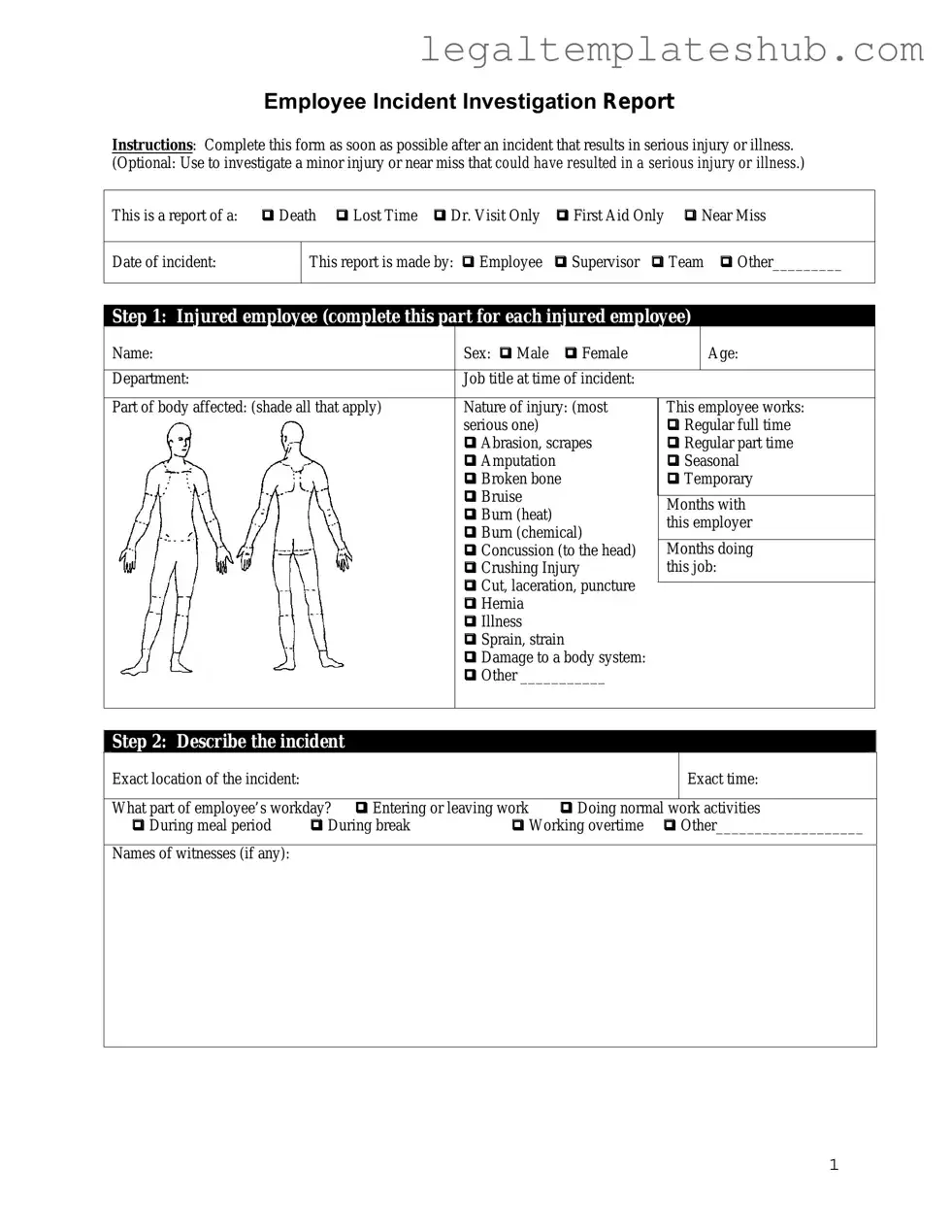Blank Employee Accident Report PDF Form
An Employee Accident Report form is a crucial document used to record details about workplace incidents that result in employee injuries. This form helps employers understand the circumstances of the accident and aids in preventing future occurrences. To ensure a thorough investigation, it is important to fill out the form accurately and completely.
Get started by filling out the form by clicking the button below.
Access Editor
